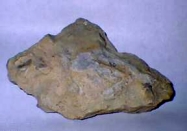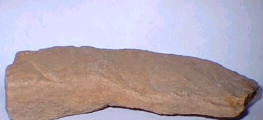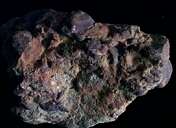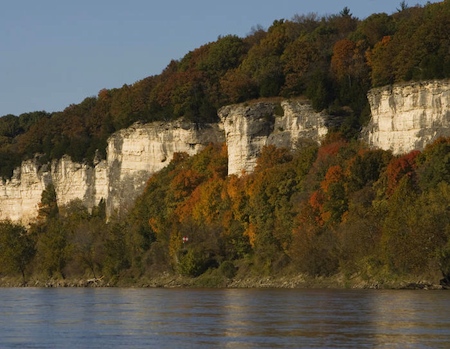Types of sedimentary rocksSedimentary rocks are divided into two groups, clastic or detrital, and nonclastic or chemical. Among the chemical sedimentary rocks are those that are "biologic" in origin like coal. The clastic sedimentary rocks form from the compaction of rock fragments, while the chemical sedimentary rocks form by the precipitation of elements. Sandstone is a common clastic sedimentary rock formed by the compaction and cementation of sand (quartz grains). Conglomerate is another clastic sedimentary rock formed by the cementation of rounded boulders, cobbles, and pebbles. On the other hand, breccia forms from angular boulders, cobbles, and pebbles. Shale forms from the compaction of clays, while siltstone (mudstone) forms from the compaction of silt.
|
||
|
Figure 14.17a Sandstone |
Figure 14.17b Conglomerate
|

Figure 14.18 Limestone
|
|
You are probably familiar with several of the nonclastic sedimentary rocks. Limestone is composed of precipitated calcium carbonate. Limestone sometimes contains visible shells of marine organisms that have accumulates on the ocean floor. Dolomite is a calcium-magnesium carbonate rock that forms as a chemical precipitate or from the alteration of limestone. Limestone is very easily weathered in warm and moist climates to create karst topography.
Coal is considered a sedimentary rock. Some might classify it as a biologic sedimentary rock as it forms from the compaction and alteration of accumulated plant matter. Coal is classified into one of three types depending on its level of development. Lignite is a soft, brown coal and is the least developed form. One might think of it as an intermediate step between peat and coal. Bituminous coal, also called soft coal though harder than lignite, is a product of deep burial and compaction. Anthracite is the hardest and most developed or pure form of coal. Anthracite forms when bituminous coal is metamorphosed in regions that have undergone mountain building. Anthracite is the most valued form of coal for its heat generating capacity and low sulfur content.
Figure 14.6 Limestone bluffs along the Missouri River.
|
||


